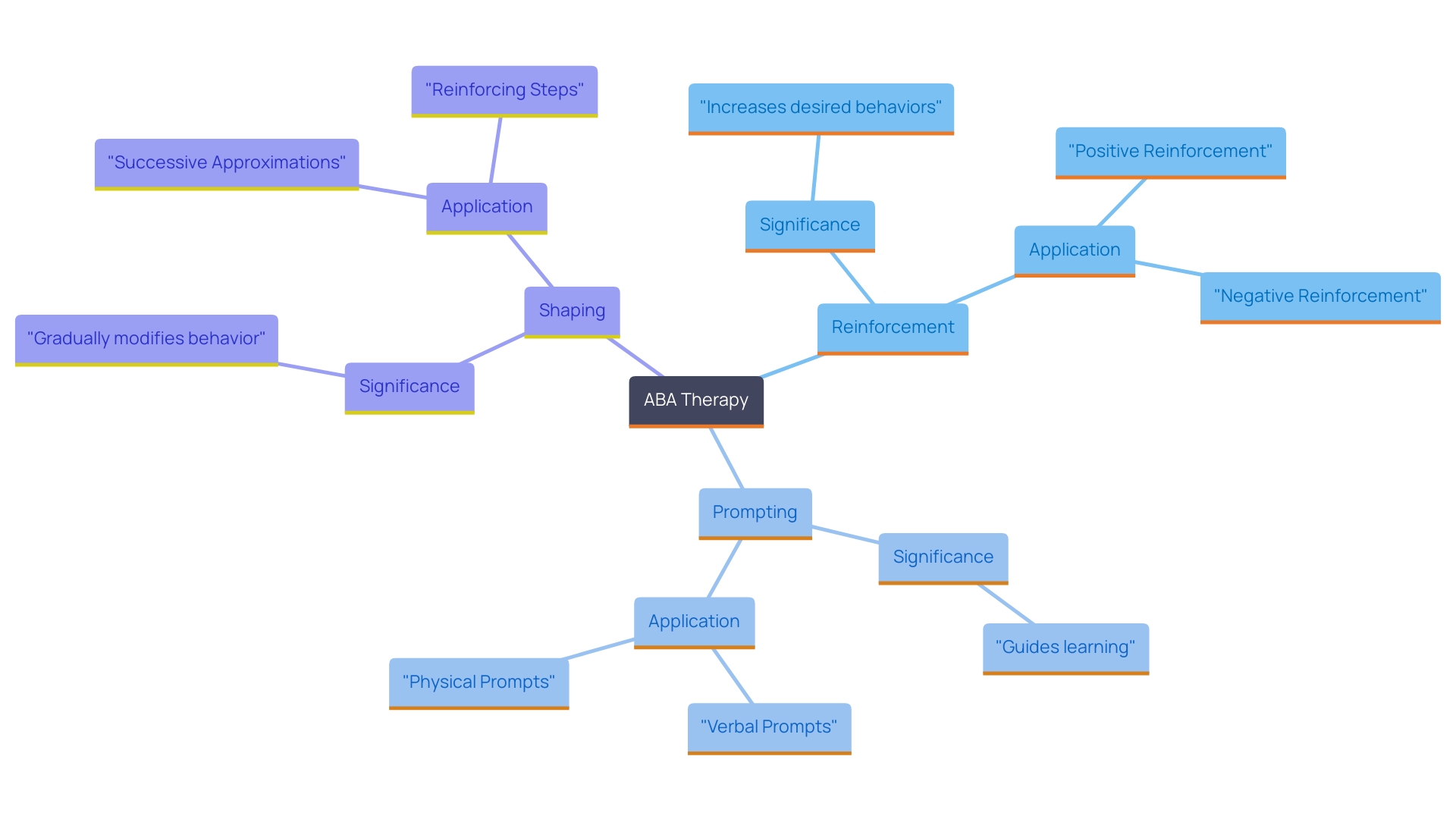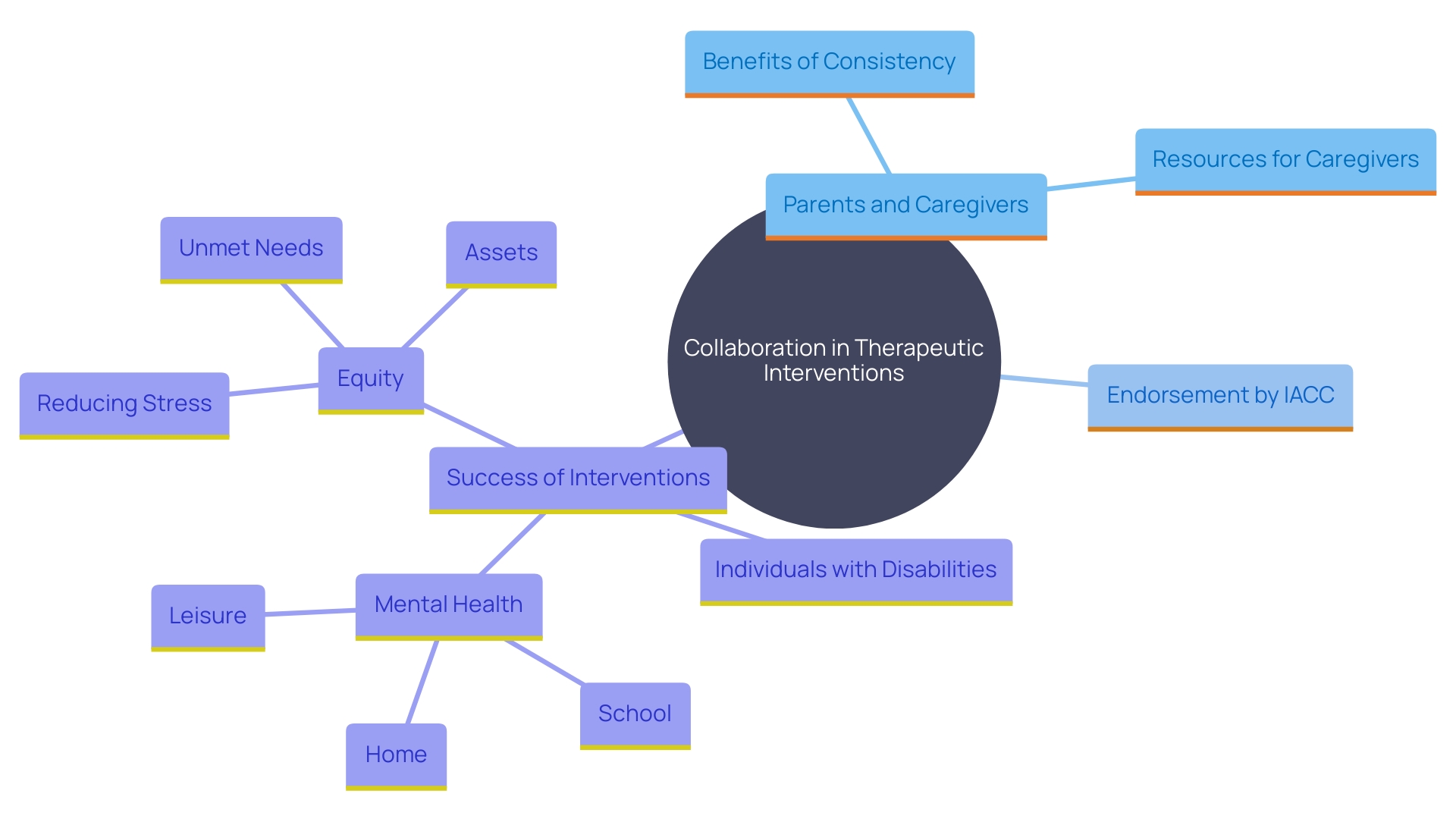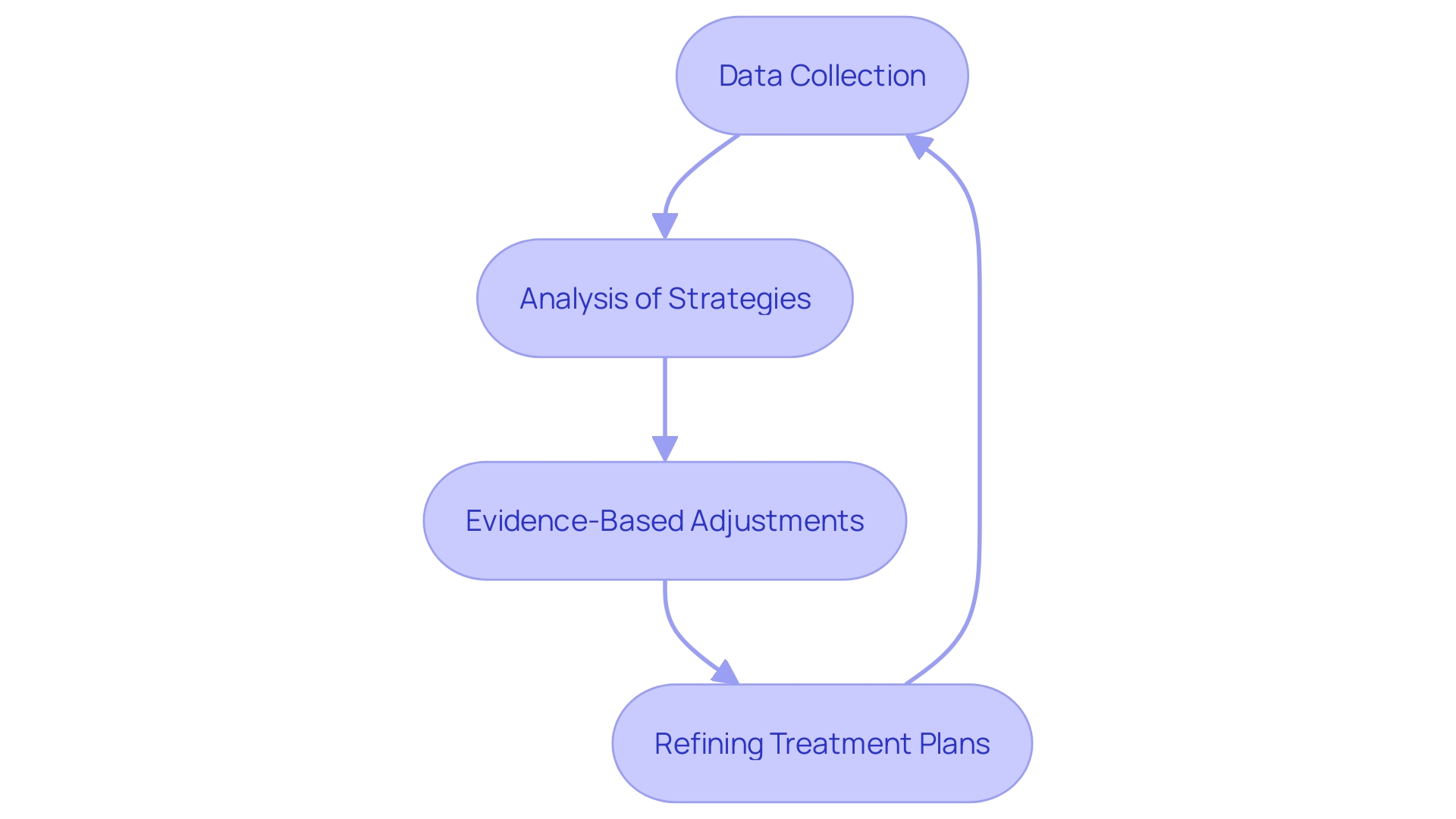Introduction
Understanding and modifying behavior in children with autism requires a strategic approach, and Applied Behavior Analysis (ABA) stands at the forefront of this effort. ABA is a systematic, evidence-based methodology designed to bring about meaningful changes by focusing on the principles of behavior and learning. This article delves into the key elements of ABA therapy, including its foundational principles, the critical role of autism behavior therapists, and the importance of effective assessment and treatment planning.
It also highlights the significance of collaboration with parents and caregivers and the continuous adaptation of strategies to ensure optimal outcomes. By addressing common challenges and offering practical solutions, the article aims to empower parents and caregivers with the knowledge and resources needed to support the well-being and development of their children.
Understanding Applied Behavior Analysis (ABA)
Applied Behavior Analysis (ABA) is a systematic and evidence-based approach to understanding and modifying actions, particularly effective for individuals with autism. By concentrating on the principles of conduct and learning, ABA seeks to create substantial and significant changes. Through careful analysis of how actions are learned and reinforced, ABA equips therapists with strategies to encourage positive actions and reduce challenging ones. Recent updates to the ABA Practice Guidelines by the Council of Autism Service Providers underscore the importance of high-quality implementation. As Lorri Unumb, CEO of CASP, states, “ABA is a highly effective treatment for autism. But it has to be correctly implemented at the highest quality.” These guidelines are crucial for maintaining standards of care across various stakeholders, ensuring that individuals on the autism spectrum receive the most effective support.
Key Principles of ABA Therapy
Applied Behavior Analysis (ABA) therapy relies on several foundational principles to guide its practice and ensure effectiveness. Reinforcement is a key principle that involves providing rewards to encourage and increase desirable actions. This method utilizes the understanding that positive reinforcement is essential for learning and conduct modification, as noted by prominent behavioral scientists. Prompting, another essential principle, involves providing cues or hints to encourage specific actions, fostering independence incrementally. Shaping is also integral to ABA therapy; it involves gradually molding behaviors through successive approximations. This approach allows individuals to achieve their goals in manageable steps, promoting continuous progress and skill development. 'As stated by the Center for Autism and Related Disorders, utilizing these principles within a flexible and adaptive framework can significantly improve therapeutic results and support the diverse needs of individuals with developmental differences.'.

Role of an Autism Behavior Therapist
An Autism Behavior Therapist plays a crucial role in implementing Applied Behavior Analysis (ABA) strategies that cater to each individual's distinct needs. By evaluating behaviors and developing personalized treatment strategies, they collaborate closely with young individuals to teach new skills and reduce challenging behaviors. 'Their expertise not only creates a structured environment conducive to learning and growth but also ensures that each individual can participate meaningfully in their daily lives, whether at school, home, or during leisure activities.'. Dr. David (Dan) R. Offord emphasized the importance of fair participation for all young individuals, and this principle is especially crucial for those on the autism spectrum who often face additional emotional and behavioral challenges. Establishing a collaborative relationship with parents through clear communication and active listening is key. As Doreen Granpeesheh, CEO and founder of the Center for Autism and Related Disorders, noted, flexibility and understanding the unique needs of each individual are vital for effective intervention. Ensuring caregivers have the resources to support their offspring's healthy development is fundamental in creating equitable opportunities for all individuals.
Assessment and Treatment Planning
Effective assessment in ABA therapy is essential for crafting personalized and impactful interventions. Comprehensive evaluations enable therapists to gain a deep understanding of each child's unique strengths, challenges, and needs. This process ensures that treatment plans are precisely tailored, with clear, achievable goals and evidence-based methods to reach them. As Doreen Granpeesheh, CEO and founder of the Center for Disorders and Related Conditions, emphasizes, establishing a solid connection and trust with parents through clear communication and active listening is essential. By actively involving parents and valuing their input, therapists can create a supportive partnership that enhances the effectiveness of the interventions.
The recently released third edition of the Applied Behavior Analysis (ABA) Practice Guidelines for the Treatment of Autism Spectrum Disorder by the Council of Autism Service Providers (CASE) underscores the importance of high-quality implementation. Lorri Unumb, CASE's CEO, highlights that ABA's effectiveness hinges on correct and high-standard application. These guidelines aim to set a benchmark for insurers, regulatory bodies, and practitioners, ensuring that the highest quality of care is consistently provided.
'Real-world case studies, such as the evaluation of a treatment package for chronic, stereotypic hand mouthing in an individual diagnosed with autism, demonstrate the practical application of these assessments and interventions.'. By concentrating on the unique requirements and utilizing the strengths of each individual, ABA therapy can greatly enhance their quality of life and encourage meaningful involvement in their communities.
Collaboration with Parents and Caregivers
Collaboration with parents and caregivers is fundamental for the success of therapeutic interventions. Autism Behavior Therapists work hand-in-hand with families to maintain consistency between therapy sessions and home environments. 'This collaboration not only equips parents with the tools to reinforce strategies at home but also fosters significant progress and provides crucial support for their offspring's development.'. As Dr. David (Dan) R. Offord emphasized, ensuring that caregivers have the resources they need is vital for the well-being of young individuals, especially those with disabilities, as it promotes equity and reduces chronic stress. 'This collaborative approach is endorsed by the Interagency Coordinating Committee (IACC), which works to enhance coordination and communication in research and services related to developmental disorders, reflecting a collective effort to support the community effectively.'.

Measuring Progress and Adapting Strategies
Ongoing assessment of progress is a fundamental aspect of ABA therapy, guaranteeing that each individual receives the most effective interventions customized to their specific needs. Therapists meticulously collect and analyze data to evaluate the success of their strategies, allowing them to make evidence-based adjustments. This dynamic approach is essential for refining treatment plans and ensuring meaningful progress. As emphasized by the Council of Autism Service Providers, ABA is a highly effective treatment for autism when implemented at the highest quality standards. The newly released ABA Practice Guidelines provide a critical framework for maintaining these standards. By monitoring behavior trends and outcomes, therapists can adapt their methods, fostering an environment where young individuals can make significant strides toward their goals. This commitment to continuous enhancement aids in establishing a just and supportive competition for all young individuals, as reflected by Dr. David Offord's vision of equity and inclusion.

Common Challenges and Solutions in ABA Therapy
Implementing ABA therapy often comes with challenges such as resistance to change and difficulties in generalizing skills across various settings. Autism Behavior Therapists are skilled at overcoming these obstacles by utilizing customized, evidence-based strategies tailored to each individual's unique needs. They employ creative techniques to maintain engagement and motivation, ensuring the therapeutic process is both effective and enjoyable. Building a strong rapport with parents through clear communication and active listening is crucial. By empowering parents and working collaboratively, therapists foster a supportive environment that enhances the child's progress and well-being.
Conclusion
The exploration of Applied Behavior Analysis (ABA) highlights its significance as a systematic and evidence-based approach to supporting children with autism. By focusing on the foundational principles of behavior modification, such as reinforcement, prompting, and shaping, ABA therapy creates a structured environment conducive to meaningful change. The recent updates to the ABA Practice Guidelines emphasize the necessity of high-quality implementation, ensuring that practitioners adhere to the best practices for optimal outcomes.
The role of Autism Behavior Therapists is pivotal in this process, as they assess individual needs and develop tailored treatment plans. Their collaboration with parents and caregivers fosters a supportive partnership that enhances the effectiveness of interventions, promoting equitable opportunities for children on the autism spectrum. By actively involving families in the therapeutic process, therapists empower them with the tools needed to support their child's development at home.
Ongoing assessment and adaptation of strategies are crucial for successful ABA therapy. Continuous monitoring of progress allows therapists to make evidence-based adjustments, ensuring that interventions remain effective and aligned with each child’s unique strengths and challenges. This commitment to flexibility and responsiveness not only addresses common challenges but also reinforces the goal of fostering meaningful participation in the community.
In summary, the integration of ABA principles, the expertise of behavior therapists, and the active involvement of families combine to create a holistic approach that significantly enhances the well-being and development of children with autism. By prioritizing collaboration and continuous improvement, the autism community can navigate challenges and ensure that every child has the opportunity to thrive.




